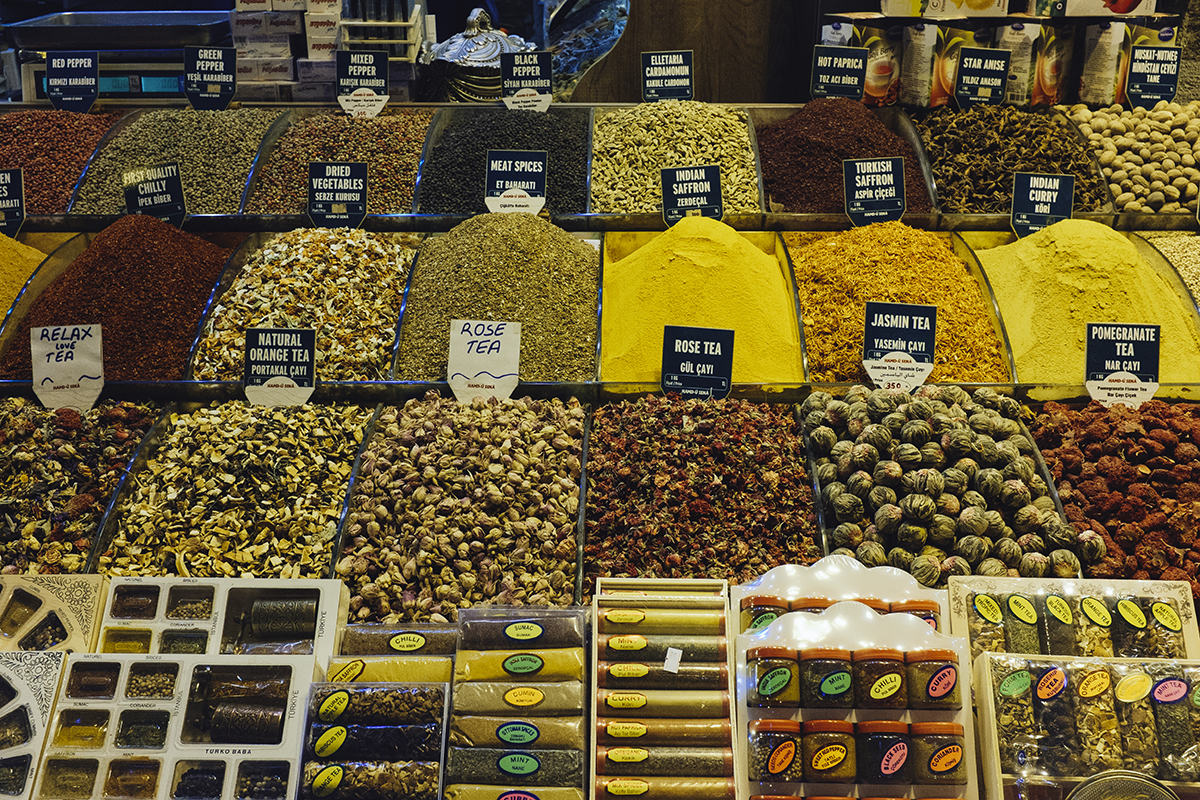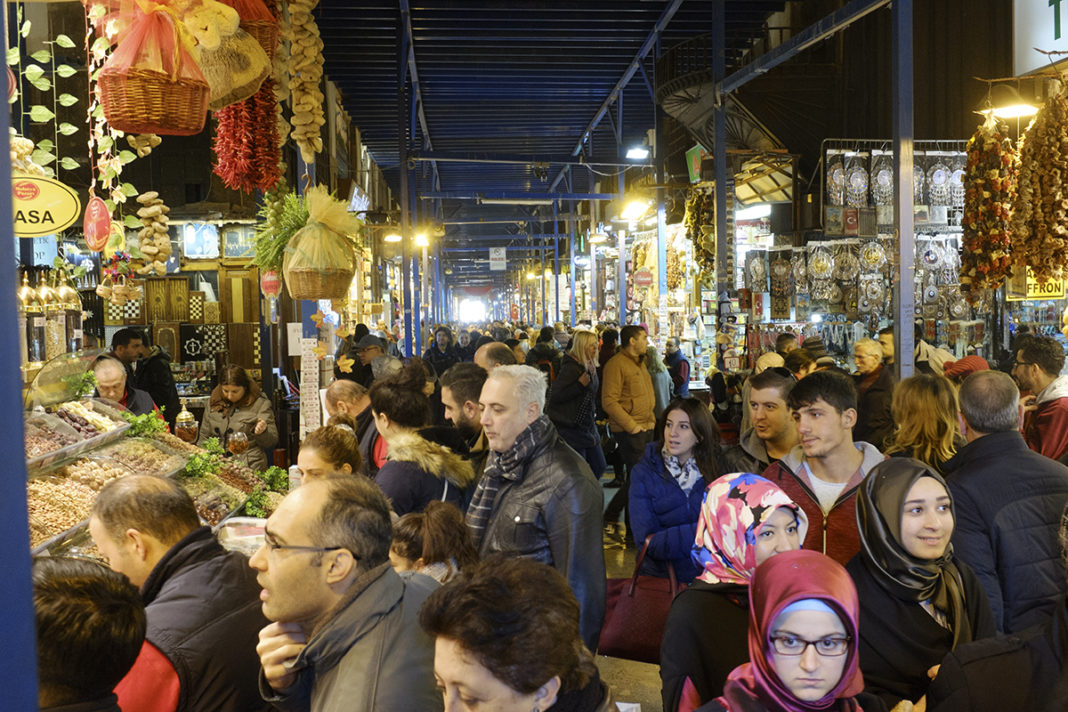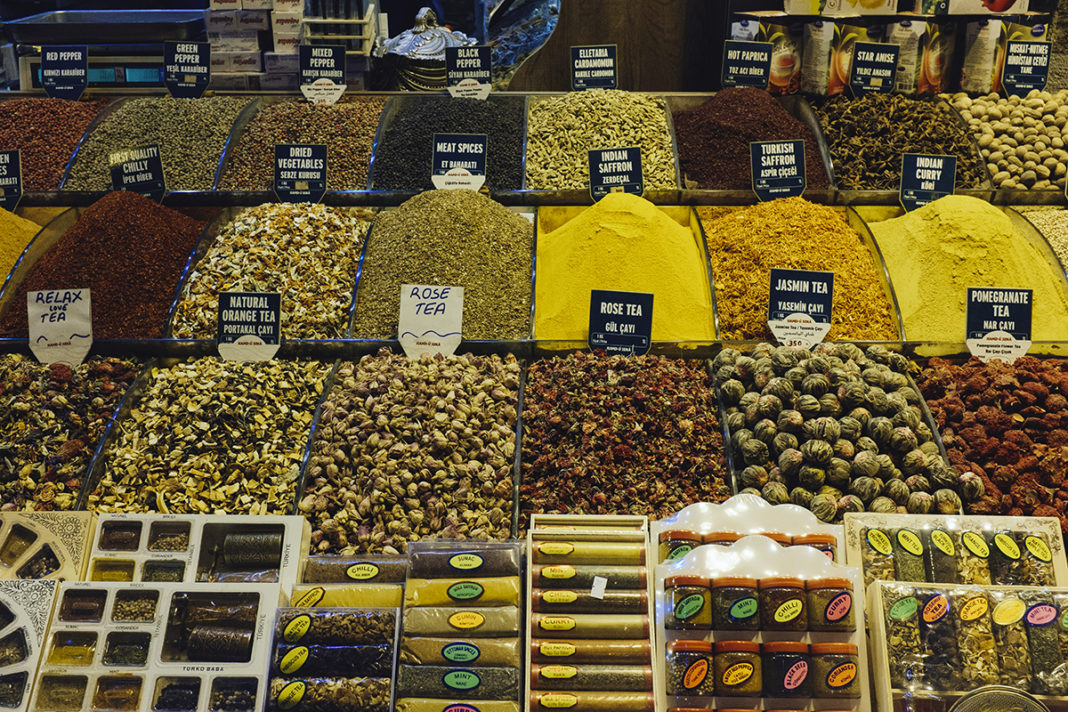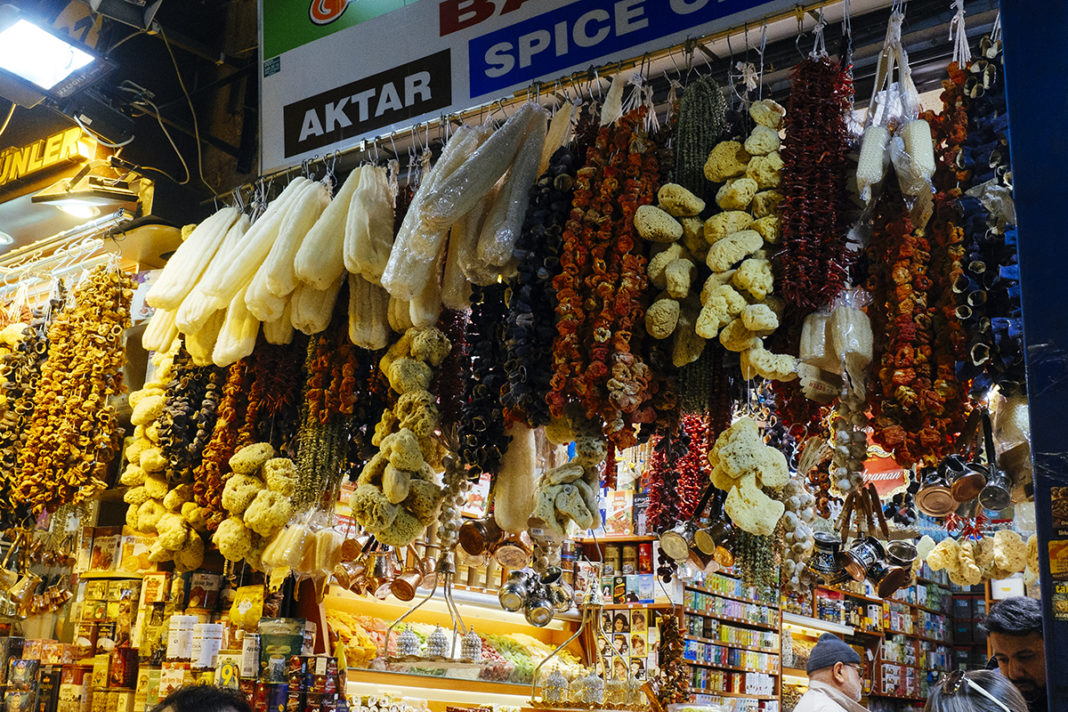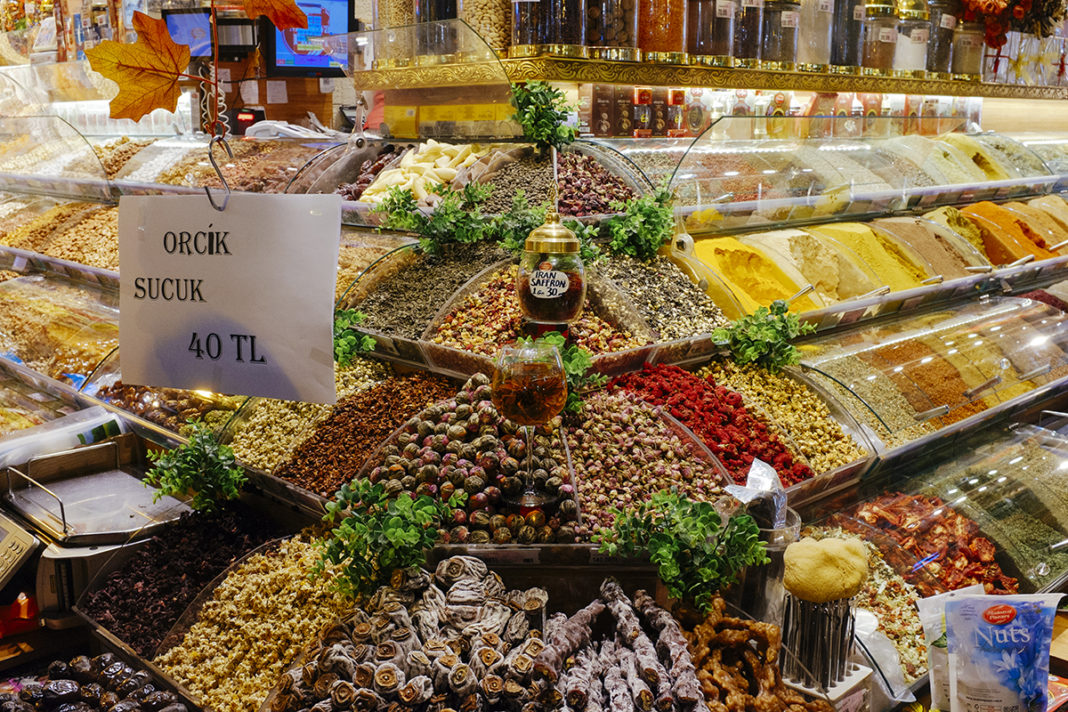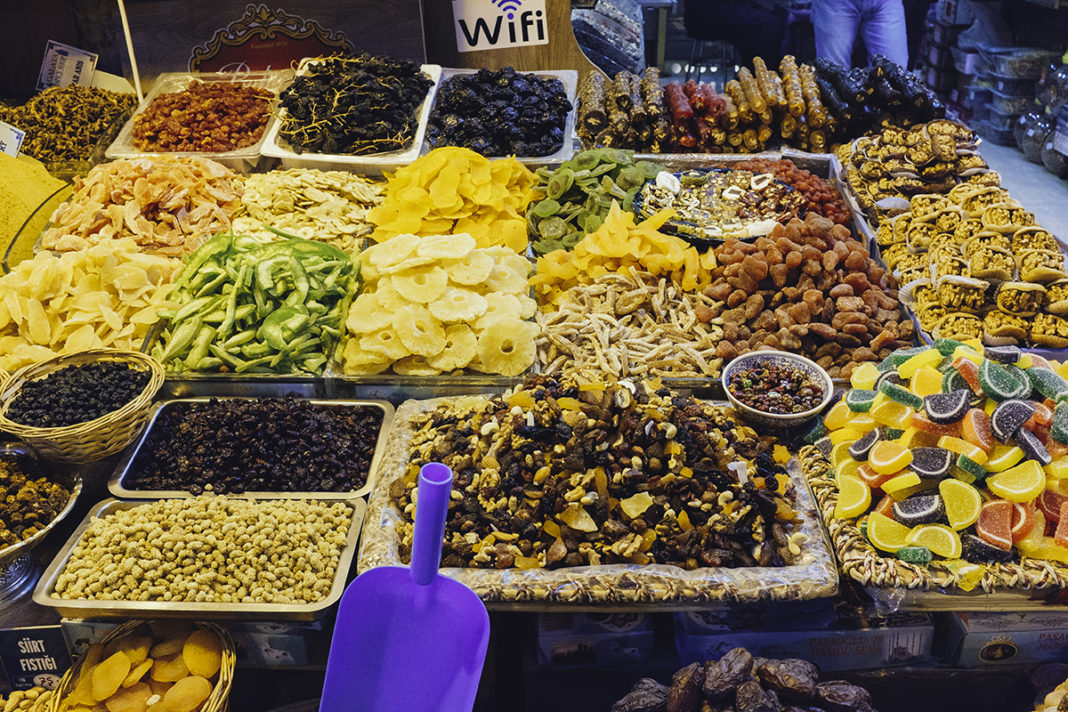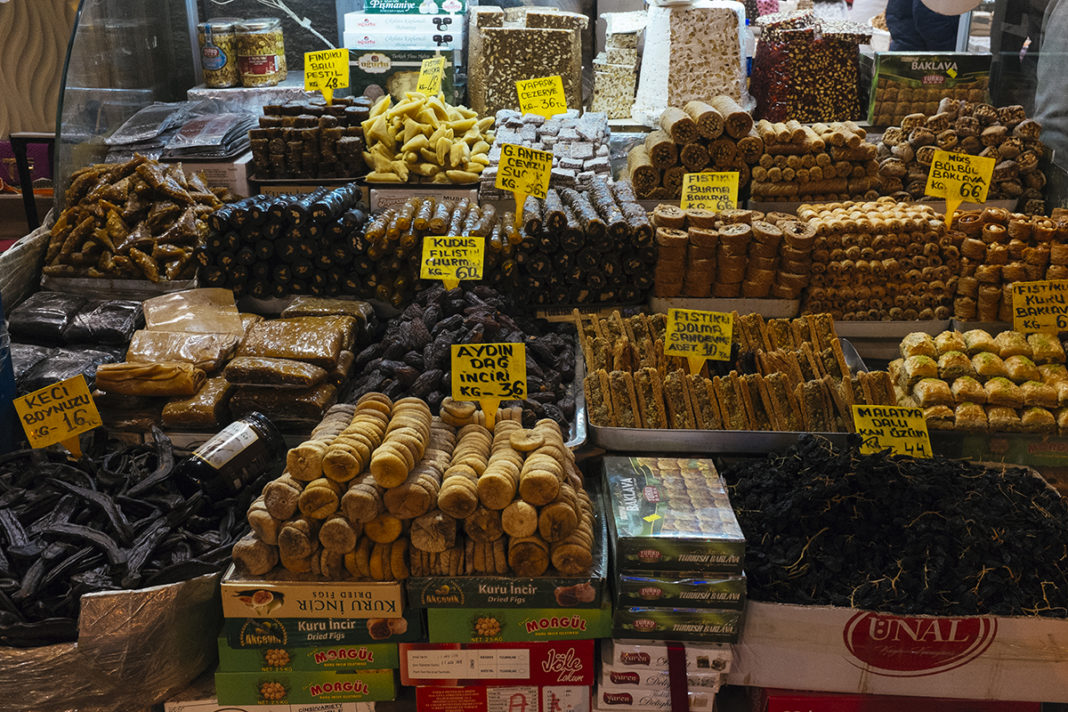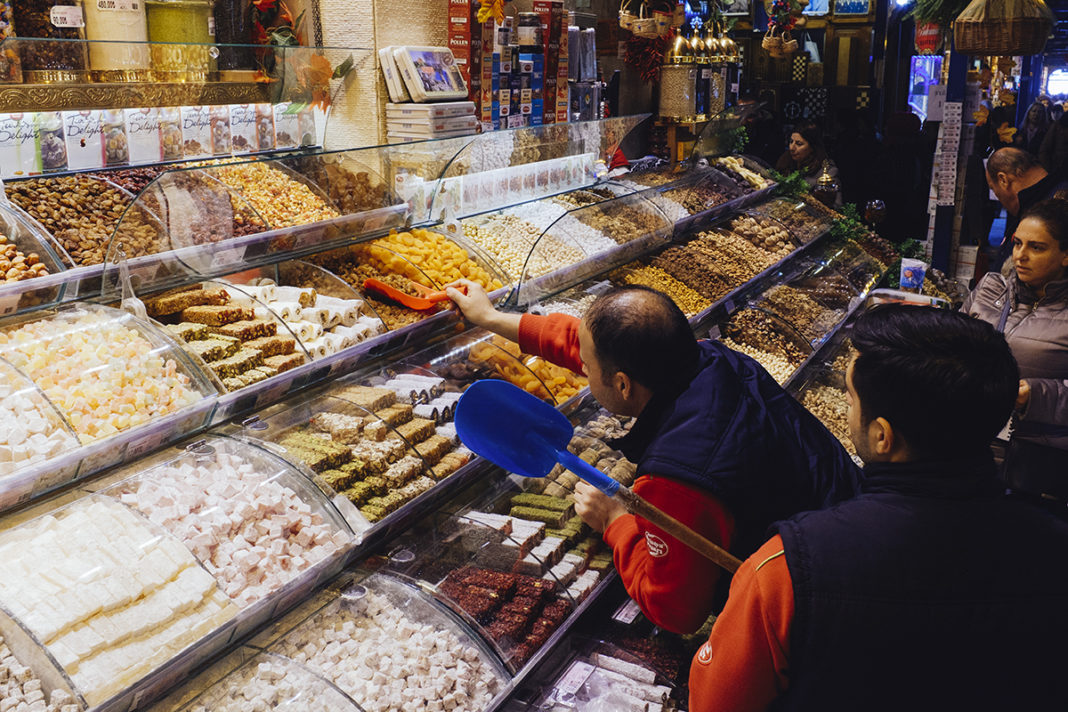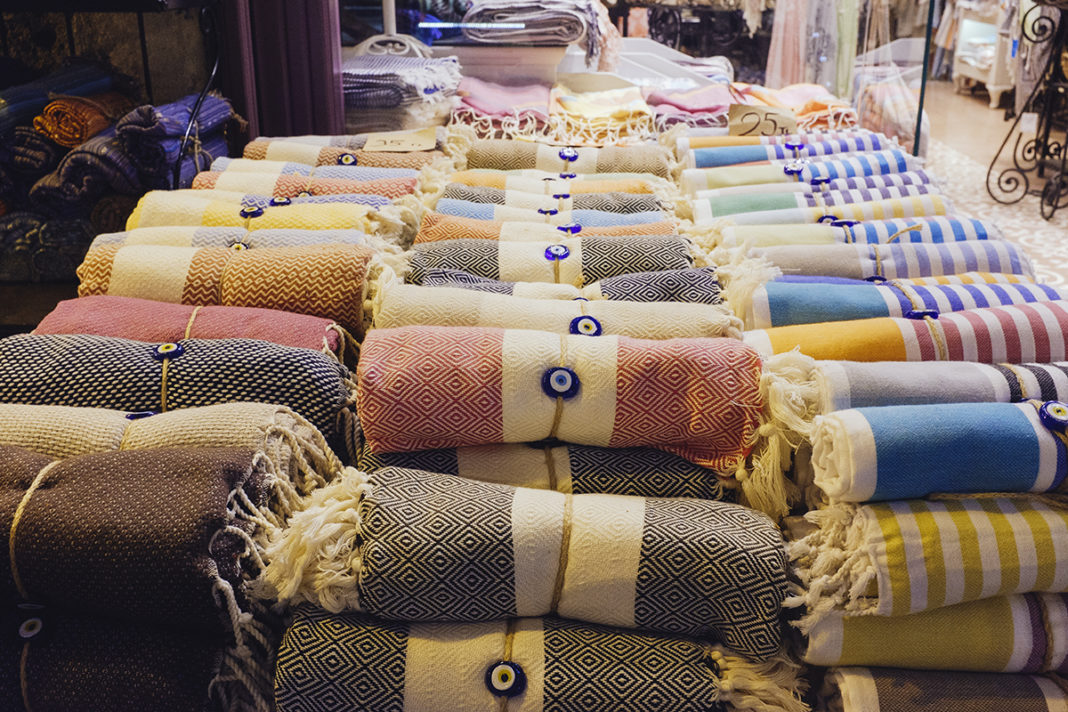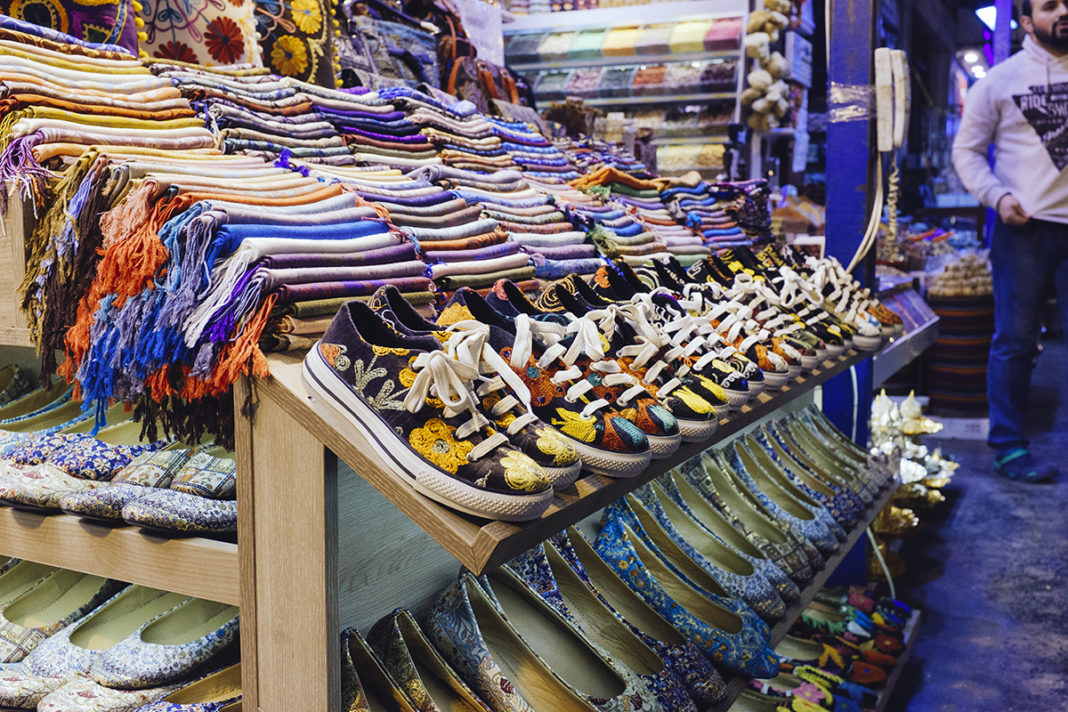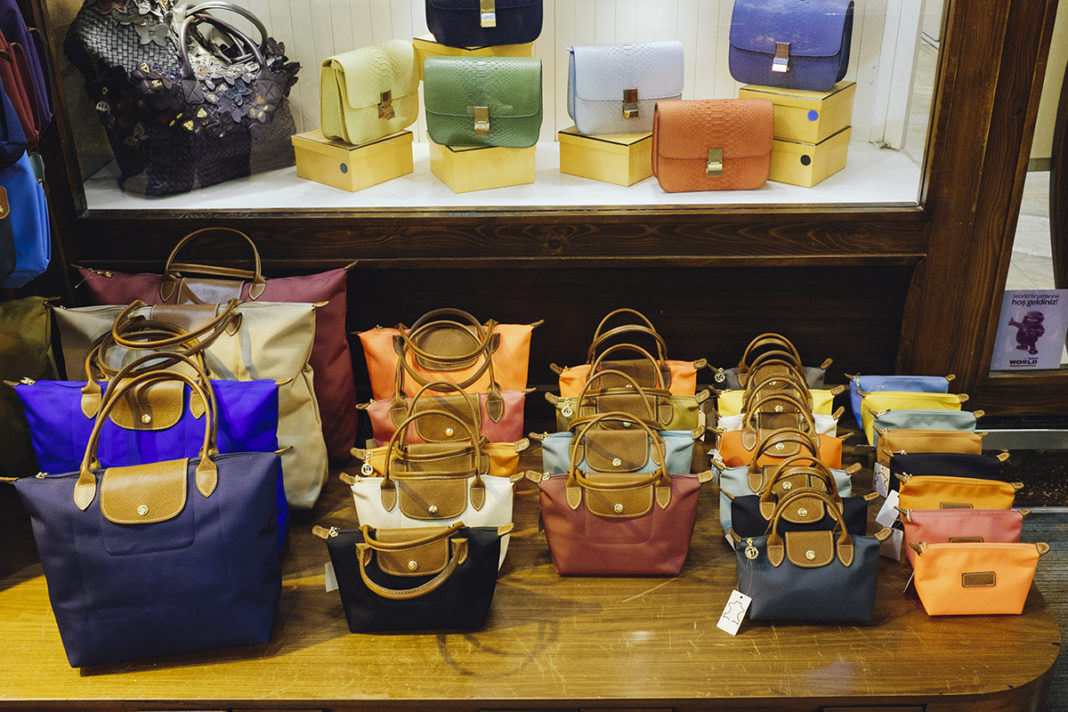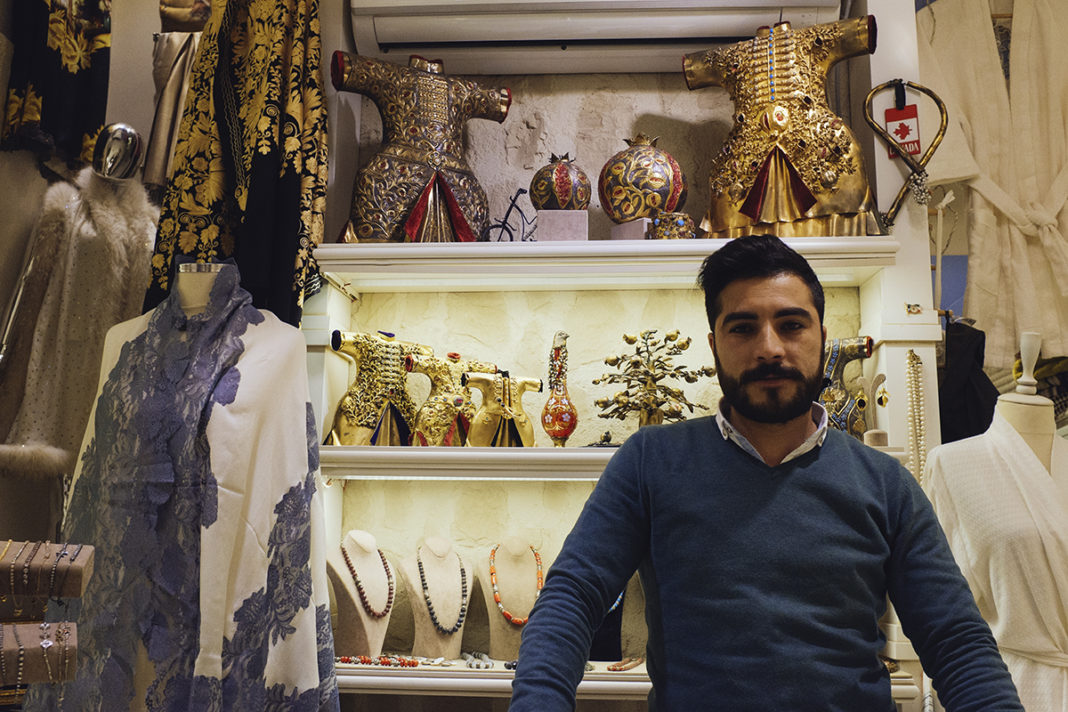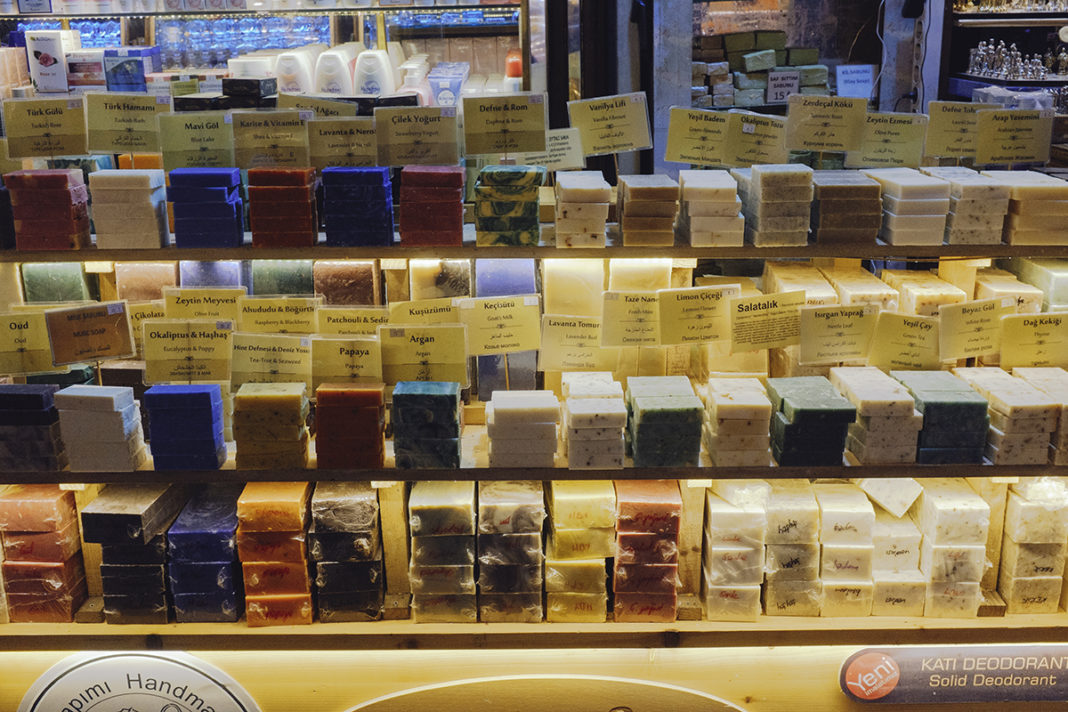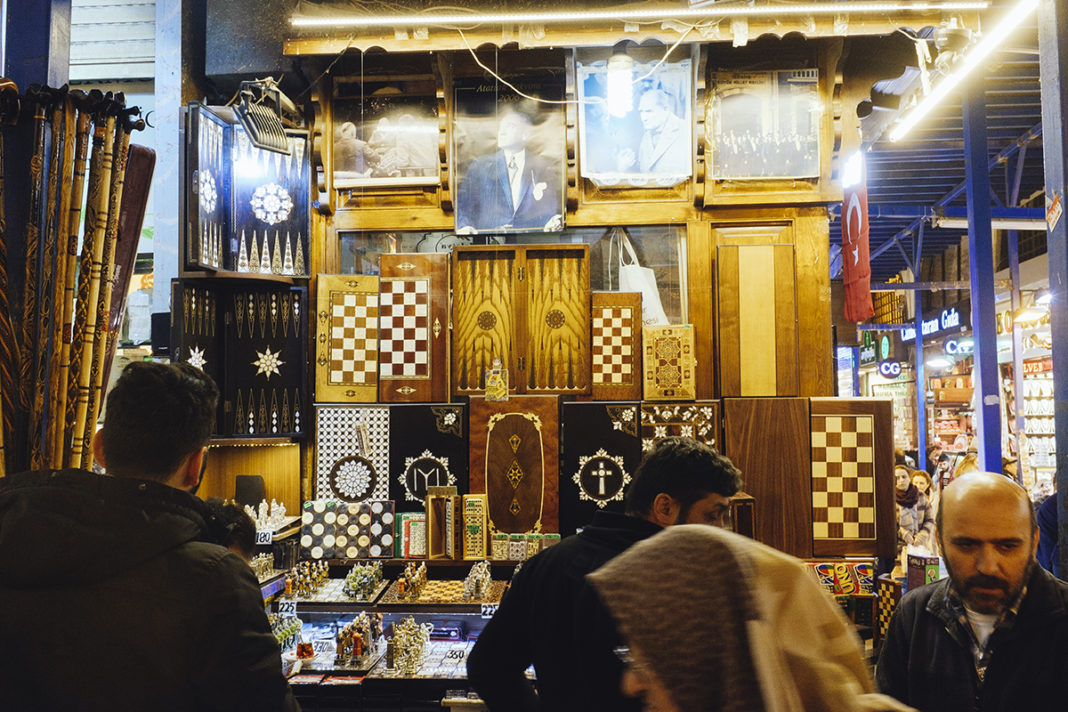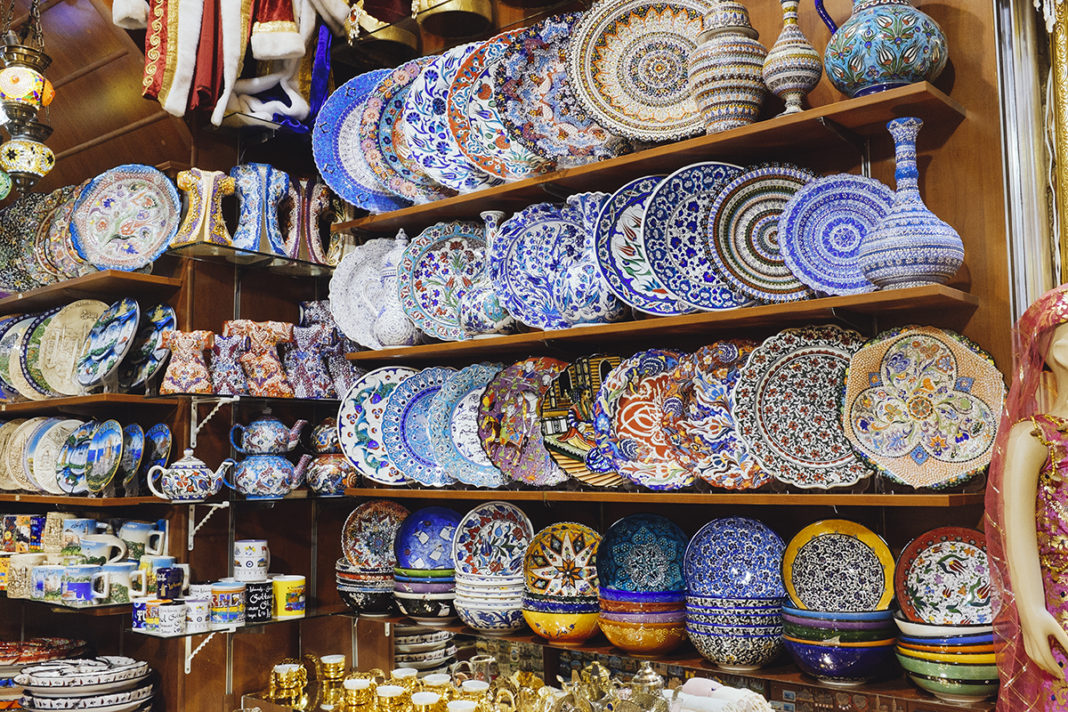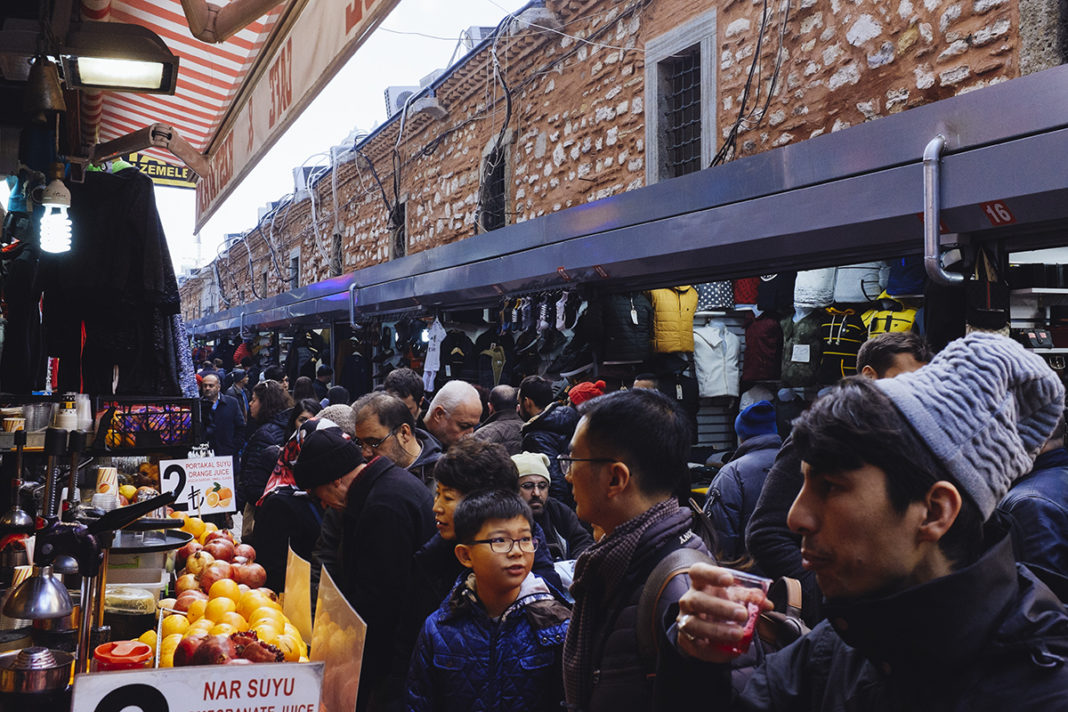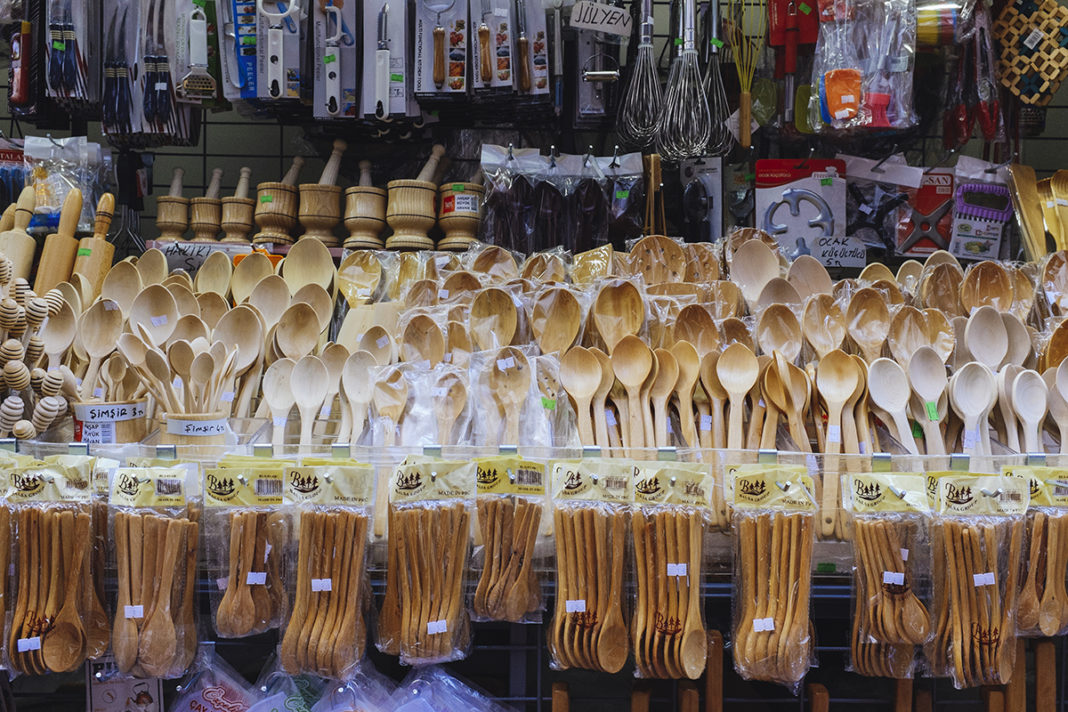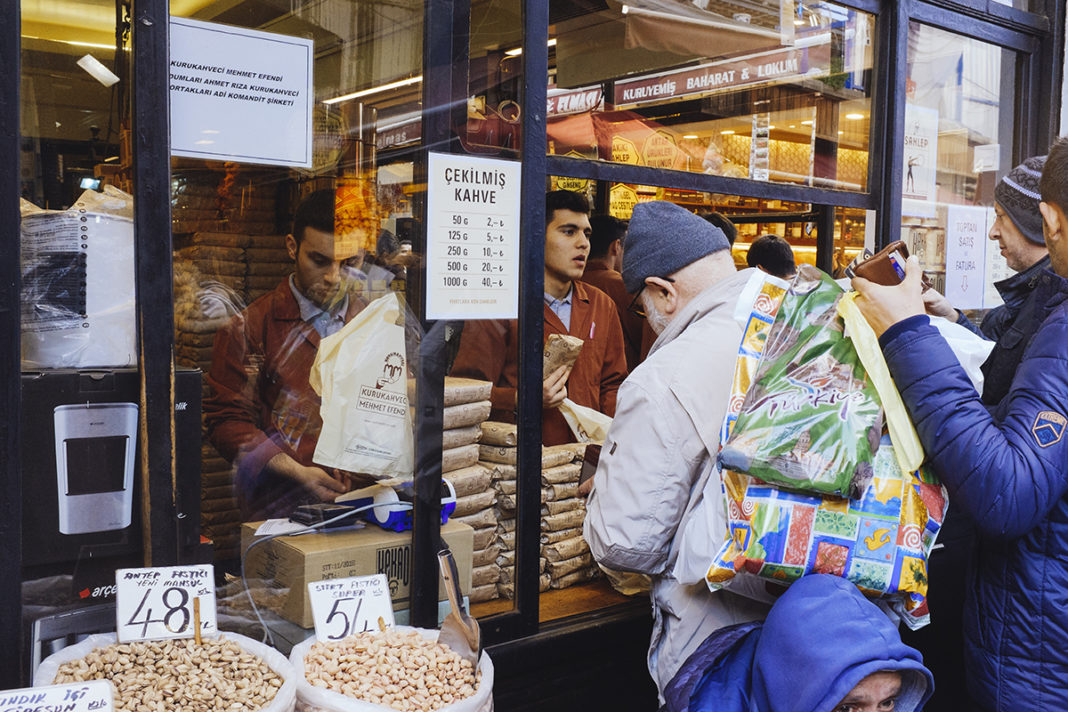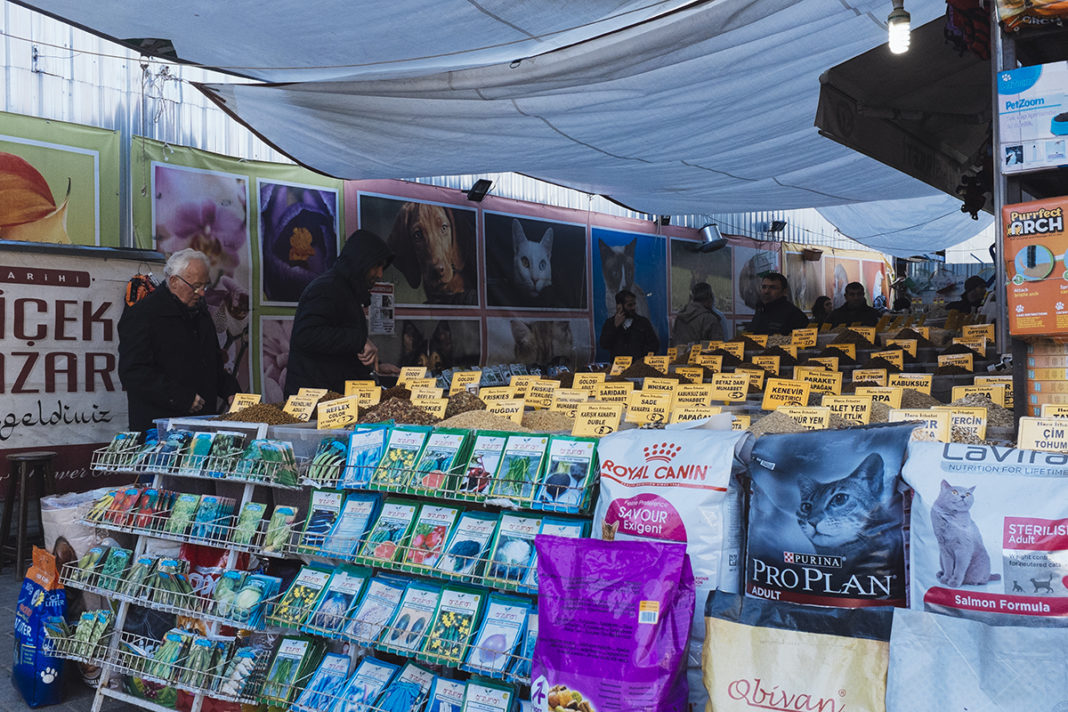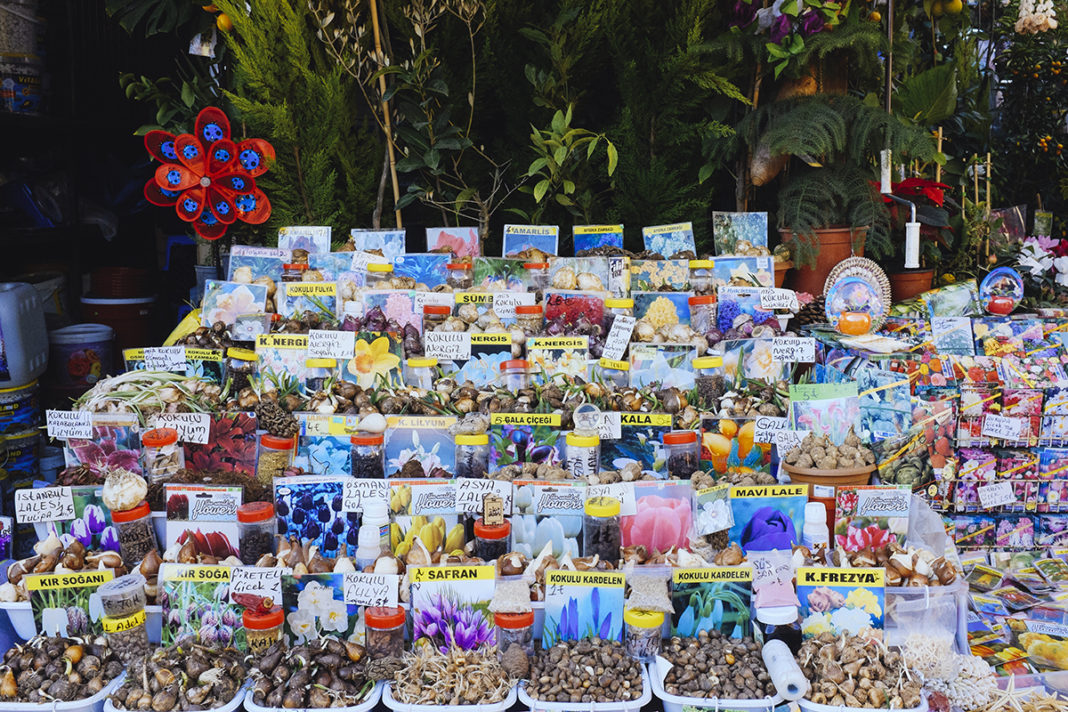There are pockets of the old traditions that remain in Istanbul, not because of any particular devotion to the past but because sometimes the past and present find space to coexist. The Spice Bazaar is one such place and owes its continued existence to consumer society’s romanticism of the past and its desire for defining shopping experiences. Today, as for the past few hundred years, the Spice Market is one the best places to find and buy rare spices not otherwise found in Istanbul.
Unlike Istanbul’s larger and more famous Grand Bazaar, the Spice Bazaar does not overwhelm the visitor with a labyrinth. It is designed very simply with two long axes, creating the appearance that the market is smaller than it is. The history and the relatively small size of the market create a degree of intimacy that is lost in venues as vast as the Grand Bazaar.
For best results, click to enlarge images.
Mounds of spice abound in the Spice Bazaar, arranged by vendors to impress with the variety of color and smell. The variety reveals itself to be nearly the same from stall to stall, as just a handful of wholesalers supply the Spice Market’s vendors. While several pre-packaged sets appeal to the tourists, who are seldom looking to pick up several pungent kilos of spice back for the journey home, locals are more likely to buy quantities for home and small restaurants. Vendors are often willing to chat and regale with the origin stories of their teas and spices. Many of them have personal stories to share too, which they do willingly. The uncertainty of whether any of what you hear is true is not unique to the Spice Bazaar, but the stories seem more appropriate here.
It is large enough to accommodate more than just spice vendors, such as dried fruits and vegetables, natural pumice and sponges, and hand-made products. In the same meter of retail space, you can find dried tomatoes, sausage, saffron from Iran, dried mulberries, dates, mint, curry, Turkish delight, and more. While probably not common, the Spice Bazaar would seem an attractive place for scavenger hunts. More than just edibles, there are soaps for every occasion, made of ingredients like tea tree and seaweed, strawberry yogurt, goat’s milk, and olive puree. Ceramic shops have also found their way into the Spice Bazaar, following the flow of tourist money. There’s even a gaming shop, catering to retro-gamers by selling chess and tavla boards.
The Spice Bazaar has become known in recent years for its textile shops. Jakob has worked in his family’s shop in the Spice Bazaar for 3 years, selling an assortment of textiles, jewelry, and small gifts. He’s a veteran of the souvenir trade, having started selling to tourists as a child. He misses the open air environments of tourist markets like Arasta Bazaar. The Spice Bazaar, as a covered market, can seem “like jail” he says, but the international clientele is worth it. He speaks five languages to varying degrees of proficiency, and most days he gets to use several of them. Next, he’s taking his business on the road for a four month trade fair in Qatar. From selling post cards in the street as a kid, where he even met and shook former POTUS Bill Clinton’s hand, to the Spice Bazaar, Jakob has seen it all.
The goods and deals aren’t confined to the bazaar itself. The alleys behind the bazaar stretch on all the way to the Grand Bazaar, selling a wide range of kitchen supplies, jerseys and shoes. On some days, the hustle and bustle of the back streets exceeds that inside the Spice Bazaar. The shops directly behind the Spice Bazaar are the place for new residents to find everything they need to stock up their kitchen on the cheap. There are more spoons on offer than you could shake a fork at.
The historic home of Kurukahveci Mehmet Efendi, Turkey’s most famous brand of coffee, lies just outside the west gate of the bazaar. It is not the only coffee roaster in the neighborhood, but it is certainly the busiest. The company’s legacy stretches back to the late Ottoman period and most consider it to be the definite Turkish Coffee.
Between the Spice Bazaar and Yeni Cami (New Mosque), lies a recently redesigned courtyard home to a well-stocked plant and pet market. Name brand pet foods, if you’re willing to place your faith in the vendor, sold by the kilo. The tram is nearby, but picking up more than a couple few kilos of food here may be tough to get back home if you don’t live on the tram line. Adjacent to the pet market in the courtyard of the Spice Bazaar is a horticulture market full of ornamental and non-ornamental seeds, bulbs, and saplings. The selection is wide enough to fill even the largest homes and balconies in Istanbul with color and oxygen production. One can never have enough of either in an urban canvas of 14 million people.
Time and Location:
The Spice Bazaar is open from 8:00 to 19:00 every day except Sunday, and is located right next to the New Mosque in Eminönü. It is easily accessible by tram or bus, and is walkable from Karaköy or Galata via the Galata Bridge.
All photographs by Colin Craig.
[geo_mashup_map]









